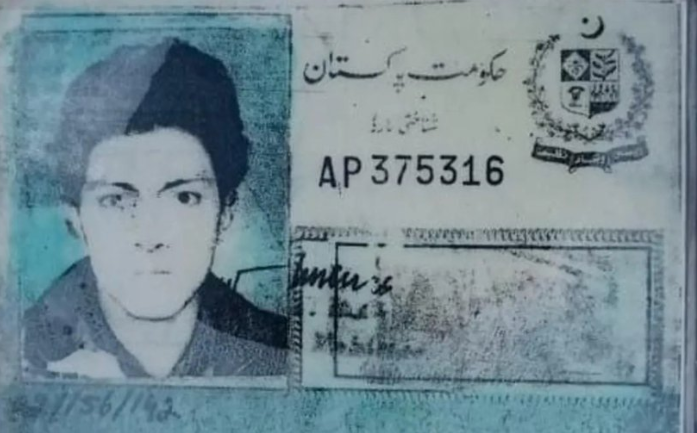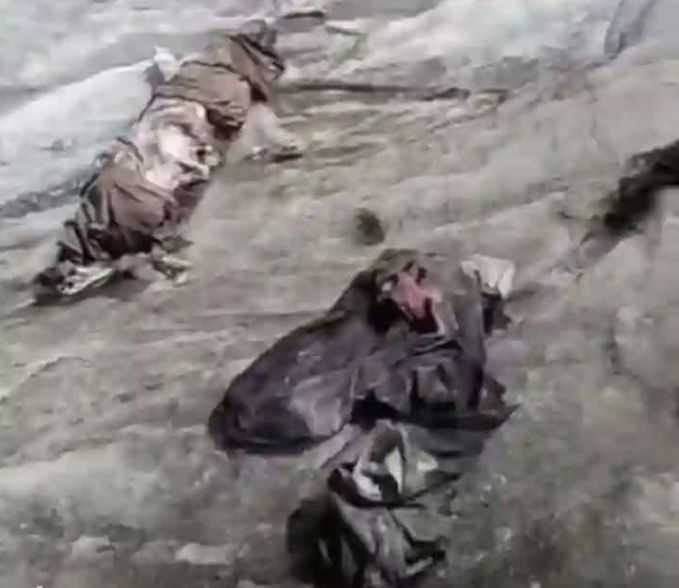Well-Preserved Body of Man Missing for 28 Years in Snowstorm Found With Clothes Still Intact

The body of a man who disappeared in a snowstorm nearly three decades ago has been discovered in near‑perfect condition on a melting glacier in Pakistan‑administered Gilgit‑Baltistan, his clothes and features preserved as if the years had barely passed.
Authorities confirmed the identity of Naseeruddin, also known as Hajo, from the Saleh Khel tribe, through a national identity card still tucked inside his clothing. His remains emerged from the ice in early August 2025 in the remote Lady Valley of Kohistan, an area rarely visited outside summer months.
Disappearance in the Supat Valley
Naseeruddin alias Hajo disappeared during a winter snowstorm in June 1997 while travelling with his brother through the Supat Valley. Local accounts suggest he may have fallen into a glacier crevasse while seeking refuge in an ice cave.
Initial search efforts failed to locate him, and he was presumed lost to the elements. Only in the summer of 2025, as a result of accelerated glacial melting, was his body revealed by chance.
Chance Discovery by Shepherd

On 1 August 2025, shepherd Umar Khan—who frequents the region in summer—spotted the remains embedded in the glacier.
According to reports, the body was so well-preserved that his clothes appeared undamaged, despite being under ice for 28 years.
Umar Khan temporarily buried the remains to prevent further deterioration, later alerting the local authorities, who traced and notified the family.
Climate Change Unveils the Lost
Experts attribute the discovery to accelerated glacial melt, a phenomenon linked to climate change. Northern Pakistan's glaciers, particularly in Gilgit-Baltistan, have been retreating at unprecedented rates. July 2025 saw record-high temperatures in the region, hastening ice loss and exposing long-buried remains and artefacts.
Environmental scientists warn that similar revelations are likely as climate patterns shift, posing both opportunities and challenges for researchers and communities.
Why the Body Was Preserved for 28 Years
According to Dr Muhammad Bilal of COMSATS University, Abbottabad, as reported by The Express Tribune, bodies entombed in glaciers can remain preserved for decades, even centuries.
The combination of extreme cold, low humidity, limited oxygen, and pressure from accumulated snow effectively halts microbial activity and tissue breakdown. This results in natural mummification rather than decomposition.
Experts describe how the freezing effect acts rapidly to halt decay. Proteins and water in tissue crystallise, and the near-absence of moisture prevents bacterial growth. That is why, even after 28 years, both the body and garments remain recognisable.
Family Reunited, Choices Ahead
Once authorities confirmed the identity, they notified family members. The deceased's brother, Kaseeruddin, revealed that the remnant route on that fateful day had been chosen as an attempt to avoid threats tied to a longstanding family feud.
Kaseeruddin is now considering whether to bury Naseeruddin's remains locally in Lady Valley or return him to their ancestral home.
Beyond a Personal Tragedy: Scientific and Cultural Implications
This case resolves a 28‑year‑old disappearance but also highlights the broader consequences of climate change in high‑altitude regions.
As glaciers retreat, archaeologists and historians are increasingly confronted with the sudden exposure of human remains and cultural relics—raising questions about preservation, repatriation, and respect for the dead.
© Copyright IBTimes 2025. All rights reserved.





















